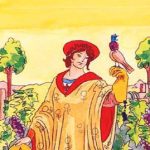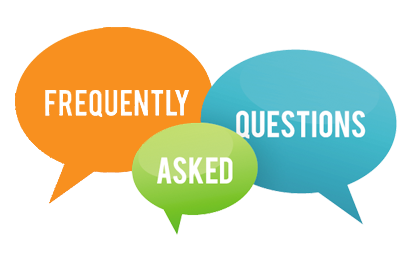
There are several tango-dancing scenes in Julieta and the Romeos. While Jules and her childhood friend Lucas are trying to figure out ways to bring more customers to her parents’ restaurant, they come up with the idea of having a “tango night.” The restaurant serves Argentinian food, and tango is central to Argentinian cultural identity, so it makes sense for them to turn to tango as a way to try to liven things up.
I’m not as good a tango dancer as Jules and Lucas, I do have a bit of tango dancing in my past. I once took lessons with my childhood best friend. And I danced tango in Central Park in New York City!
Julieta and the Romeos is a book about finding one’s way and figuring out the right path when there are many open. It’s about the push and pull between being the child of immigrant parents and having the lofty and maybe impractical goal of making it as a writer. It examines the multi-generational immigrant experience. Plus it also looks at the issue of love, what it means in our life, what we do to find it, and what we sometimes overlook about it.
Like Jules, I know what it’s like to be from an immigrant family but also have the “impractical” dream of wanting a career in the arts. Jules in JULIETA AND THE ROMEOS wants to be a writer (write what you know!). But her family has a restaurant that’s struggling and the need to make ends meet is very real in her life. I have faced some of those same challenges, and I wanted to explore them through this book.
I’ve always looked for “writing adjacent” roles. I did marketing for various companies, which involves writing webpages and email copy, among other things. In my twenties, I started a day care center with my mom. She still runs it! There wasn’t a ton of writing involved in doing that, but I did get one writing “win” from it. A rep from a small, local magazine came to speak to us about advertising with them. Instead of advertising, I talked them into letting me write articles for them. The gig didn’t pay, but it was thrilling to see my name in print.
I have a diary from when I was twelve years old that says, “…most of all, I want to be a writer.” But I had no idea how to make that happen! I didn’t start selling my writing until decades later. It took me all that time to figure it out. If there’s one lesson I learned from that, it’s to stick to trying to achieve your dreams, even when you don’t know how you’re going to do it.
I love going new places and trying new things. I like eating any kind of new food. I’ve missed travel a lot during the pandemic. I love painting and drawing, although I wish I did it more. I’m a cat mom and a gardener. Mostly, my happiest times are when I’m having interesting conversations with people whose company I really enjoy. For a rush, I think the thing I’ve found most exhilarating recently is zip lining.
My first nationally published piece was a piece in Newsweek in which I talked about my undocumented status. I’d never shared that publicly before and I was so scared. But it set me on a journey to having the writing career of my dreams.
Confidence in one’s writing is a funny thing. Sometimes I love something I write but nobody wants to publish it. Other times I think something I’ve written is just fine but it gets praise. So I do my best to not focus too much on other people’s opinion of my writing when deciding if I am confident in it. I try to write things that feel true to me, that express something that matters to me. It’s not always easy for me to find that internal compass when it comes to my writing, but I strive for that all the time.
I have an extensive “parking lot” of ideas. Some are fully-drafted novels that need a good edit so they can (hopefully) find their readers. Others are just quick notes in my phone, things like, “Write about a ‘liberal elite, East coast’ hipster couple who moves to a midwestern state to help turn it blue.” So the short answer is that I want to publish a lot of things! I think next I’d love to sell a young adult fantasy and an adult psychological thriller. Stay tuned!
I just turned in a draft of my next book to my editor this week! I’m really excited about that. Once I’m allowed to give details, I will update the site with information about it, including its release date.
Like Ana, I also did not speak English when I first moved to the U.S. I mined a lot of those memories for the scenes in which Ana is confused in class, or in conversation with new friends. I have strong memories of sitting in class and wondering if I would ever understand anything. So I really relate to Ana in that way.
I appreciate characters, especially female ones, who let themselves feel their anger. I think girls in our society are taught to be pleasing, to smile, to not be angry. But sometimes things happen that rightfully make us mad, or make us feel it’s unfair. M.T. feels those things, and I did both as a teenager, and even sometimes as an adult. So there’s definitely a lot of me in her.
I don’t know that any social isolation I experienced was due to my immigration status, since my family kept it hidden and never talked about it. I sometimes felt isolated because, without a social security number, I couldn’t do things other kids my age could do, like get a driver’s license or go on school trips abroad. It took a lot of effort to keep my undocumented status concealed. I am naturally prone to feeling excluded, but it’s hard to unravel what part of that was from my knowledge of how precarious my situation . Probably a combo of both.
I do remember once when I was small, around five, I think, a neighbor boy told me his parents had told him he couldn’t play with me anymore because his parents said I was a dirty (slur). It was my introduction to the idea that people could judge you not because of who you were as a person but the group they decided you belonged to.
I came to the U.S. twice. My immigration story is complicated, as so many are. The first time I was a newborn and my mom and I came on a plane and overstayed a visitors’ visa. The second time, we’d left the country to go to a funeral in Argentina and then, due to our immigration status, couldn’t get permission to come back to the U.S. So after two years of trying, we came over the U.S./Mexico border undocumented. That was scary, and I still think about those experiences. I was eight years old but I remember a lot about it. I was undocumented until I was eighteen, at which point an amnesty put me on a path to citizenship.
The easiest way is to sign up for my newsletter by filling out the form below. You’ll note that it asks for a snail mail address. You only have to fill this out if you want to receive a free bookmark. If not, leave it blank. It’s not required.
I send out maybe six emails a year with what’s coming up.
This is like asking which is my favorite child! Impossible to answer. Often my favorite is the one I’m reading in the moment. But here’s an attempt at writing about books that moved me or were somehow significant in my development as a reader and a writer:
Station Eleven. This is the book that’s most captivated my imagination in recent years. I’ve read it at least four times. I’ve been a long time fan of post-apocalyptic fiction, going back to my first foray into the genre in my teens, but this book adds something fresh to the conversation. The author, Emily St. John Mandel, calls it “a love letter to our world,” and I think that’s what I adore about it.
A Tree Grows in Brooklyn. This book is a perfect example of how kids can see themselves in books that don’t precisely represent them. Francie is different from me in many ways: an Irish immigrant living at the start of the twentieth century. And yet I felt like I was reading a kindred soul’s story when I discovered it as a kid. As a poor, scared kid from an immigrant family, this is the first book that made me feel seen.
Tiger Eyes. Who doesn’t love Judy Blume, right? I could list half a dozen of her books that meant something to me as a kid. But Tiger Eyes did something special for me. It helped me see that a character (and a girl!) could be angry, and surly, and not know the answers. Having been raised on “can do” protagonists like Nancy Drew, who felt so unlike me, (nothing but love for Nancy, btw!), Davey in Tiger Eyes gave me permission to dream up flawed protagonists. I love this book.
The Handmaid’s Tale. I read this book back when it came out in the 80s (way before I should have, maybe!) and it was an eye-opening and disturbing read. But perhaps what I loved most about it was that epilogue, in which scholars are discussing the “historical” time period of the story in cold, academic terms. I still yearn to include something like that in one of my books!
I realize I’ve only listed female authors. Hmmm. I swear that wasn’t intentional but I’m kind of happy about it too. The guys get a lot of credit all on their own.
And of course this is a ridiculously abridged list! My goal is to keep adding to it. This is a start!
I have stories and poems dating all the way back to when my mom taught me to read and write in Spanish when I was four. I also have a diary from when I was about thirteen in which I reported that I’d started my first novel. The working title was Look Me Up on Easy Street, which is pretty funny, because the explanation I gave for the plot is that it was a story about how being rich is hard too. But I grew up really poor, so it’s peculiar that I thought I could write this story with the information available to me at the time. I had clearly not yet heard of “write what you know.”
The first novel I actually published was THE SECRET SIDE OF EMPTY. You can read about it: click here.
I have a diary entry I wrote when I was twelve years old. It said, “Most of all, I want to be a writer.” I was an avid reader, and it stands to reason that a kid who loved books dreamed of creating them. But figuring out the publishing industry is hard! It took me quite a few years to go from that diary entry to my first published book. The trick, for me, was to stick to it no matter what.
As a former undocumented immigrant, and someone who speaks at schools and events about the immigrant experience, one of the questions I get most commonly is “How can I help?” It is one of my favorite questions.
First, you’re already doing it. Reading books about the immigration experience, and taking the time to find out more, means that you’re an empathetic and concerned person. Studies show that people who read fiction care more and understand the world around them. So keep doing that. Not only is reading fun. It’s also a way to grow as a human being.
Second, take the time in your own life to be as inclusive and caring as possible. That new kid at school? Talk to them. Understand other people. Try to listen to as many different viewpoints as possible. Stretch yourself.
If you’re looking for non-profits to which you can donate or with whom you can volunteer, there are many good ones. But, as always, do your own due diligence before you give. Sites like Charity Navigator can give you ratings and information about how much of your donation goes to help people vs. to the non-profit’s operational costs.
Non-profits who work to help immigrants:
And, as always, don’t forget to look right in your own area when looking for ways to help immigrants. I’ve taught ESL, served as co-chair of an immigrants’ rights organization that provided food and services for our local day laborer population, and volunteered to help new refugees… all just a few miles away from home. Chances are good there are great organizations right in your city or county that are already set up and are helping… and could use your help too. Google your town/county name and “immigrant rights organization” to see who is already doing the work… and join them.
Love in English is a book about finding one’s voice, about what it feels like to be new in the U.S. (as I once was) and how to navigate things like dating and friendships with that as a constant in the background. It covers issues of assimilation and language acquisitions, things I have personal experience with. It doesn’t take on issues best served by other writers, like the experiences of people of color, which I am not. Here’s a piece about why I didn’t address issues of machismo in Latinx culture with the character of Altagracia, Ana’s best friend. I’ll add more on themes and issues covered in Love in English as I write those posts. Check this space!
Love in English is a story near and dear to my heart. It is about Ana, who moves to the U.S. and doesn’t speak much English, just like I once didn’t. While she’s trying to learn the language and find her voice, she also meets two sweet and very different boys. Will they or won’t they? Read more here.
I do! Sometimes I update it all the time. Other times, like when I’m on deadline, not so much. You can find it here.
I sometimes hear from readers who have questions about my cultural identity. My family’s immigration story is complicated, and I always try to be as clear and specific as possible, so you have a sense of the perspective from which I’m writing. Here are the basics: my parents were both raised in Argentina since they were babies. Like Dreamers and other childhood immigrants in the U.S. who grow up American, my parents were taken to Argentina as children and grew up Argentinian. Argentina is a country of immigrants, just like the U.S. is. My parents were immigrants to Argentina, grew to adulthood, studied, fell in love and married in Argentina. They made their home there until they decided to come to the U.S. (they thought temporarily, although that’s not how it worked out).
I first came to the U.S. as a baby when I was a few weeks old. My family’s immigration journey has many twists and back and forth – I crossed over the U.S./Mexico border undocumented at eight years old, for example. I have written many detailed recountings of our immigration story, in essays and posts. It’s been rich fodder for my writing and I’ve never been shy about sharing it. I am proud of the many generations of my family who worked to make a better life and I embrace them all. But, frankly, when asked “what” I am, I don’t love the unspoken suggestion that I’m obligated to explain.
On issues of identity, I’m a believer that we all have the right and power of self-determination. I’m Latina. I wouldn’t dream of asking anyone to justify or “prove” their gender or sexual identity, or their cultural identity. So rather than offer you the blow-by-blow, multigenerational immigration saga of my grandparents, my parents and me, instead I’ll offer you this: I am Argentinian-American. It informs how my Spanish sounds, what I eat, the way I see the world. It’s where my extended family is. It is who I am, and that is all.
I have been identity policed by a small but vocal number of people, not readers who have experienced my work but mostly other writers and aspiring writers who made snap decisions without all the facts about me and with just one bit of data they didn’t seem to like: that I got a big book deal. I don’t worry so much about what that does to me, because I am living my best life after a lifetime working hard to get to where I am. My worry is for any reader who has seen that and felt ashamed or afraid in their own invisible identities. To you, I say, if anyone asks you to “prove” who you are, remember: you are your beautiful, complete self, on your terms. You are perfect exactly the way you are. You don’t owe anyone any explanations and you don’t need anyone’s permission.
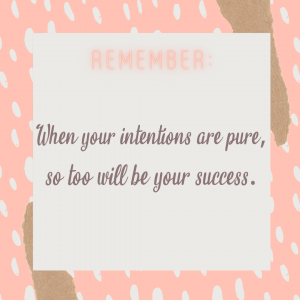
It broke my heart when I started to do appearances to promote THE SECRET SIDE OF EMPTY and I began to get this question. Readers had really connected with the characters, and were worried for their future. It was flattering, but also a little sad. I never want to make anyone worry.
Insofar as M.T. was born from my own adolescent experiences with being undocumented, then I can tell you that for the person that inspired that character (me!), things worked out better than I could have ever imagined. There was such a beautifully happy ending (still in progress) for me and mine that I often have to stop and marvel at it.
But there are hundreds of thousands of children, teenagers and adults currently in the impossible situation that M.T. finds herself in, at least as of this writing. I keep hoping that one day SECRET SIDE will just be a story about how things used to be. Unfortunately, it’s still much too real for way too many.
If you’re moved to learn more about the plight of Dreamers, and see how you can help, there are many great organizations. Look for one where you are. I like United We Dream.
Nope! But I’d love to live in a town named Willow Falls… wouldn’t you? Willows and waterfalls, two of my favorite things.
The town is intended to be in suburban New Jersey, and it’s certainly like many towns around where I live. I wanted it to have a certain urban proximity, and since New York City is the city I grew up around, I picked that one. And I also wanted it to be a place where people of abundant means and people like M.T.’s family might mix, and that happens in this part of the country. There is something about growing up without a lot of financial security, but seeing people with way more than you have, that I wanted to look at in THE SECRET SIDE OF EMPTY.
Plus, well, I’m a Jersey girl.
That said, there are people having the same struggle that M.T. is having near you, guaranteed. And you may not even know it.
Ummm… kinda sorta, yeah. Many details changed to protect the innocent, but I had a wonderful first love, and he was a lot like Nate.
And that’s all I’m telling!
Meet the characters from THE SECRET SIDE OF EMPTY: click here.
I’ve been lucky to have great, lifelong friends in my life, so I definitely drew from those experiences to write a trusted, loyal, true friend. But Chelsea isn’t really like any of my friends, not my high school friends who saw me through a lot of the difficult experiences I share with M.T., and not my friends now. She was invented out of whole cloth. I do wish I had a friend like her, because she’s generous and sweet. I loved writing her.
Meet more of the characters from THE SECRET SIDE OF EMPTY. Click here.
They have their own page! Click here to see it.
Alas, no. I’m sorry if you have a paper due tomorrow. (I really mean that!). You can find out about the main characters and other things here.
But I’m told it’s a fast read. So if the paper is not due tomorrow, take a chance… you may be surprised how quickly you get through it. Which is sort of weird since it took me years to write it and get it published.
And, no, writing me will not make me send you secret Spark Notes. But I do love to hear from readers!
I wrote a piece about it. Click here to read it.
No! Well, not really. Not exactly.
It’s true that, like M.T., I was undocumented as a teenager. Some other details fit, too. But M.T. is a teenager now (you know… as far as fictional characters are anything “now”) and I was a teenager… not now. I took the kernel of the experiences – the emotions, fears, secrets – and put them into a completely fictional character in a thoroughly fictional world having a totally fictional experience.
If it fits in my schedule, I’d love to! You can see where I’ll be appearing on my Events and Appearances page. You can also get in touch with my Events agent. Find their contact information on my Contact page.
Thank you for visiting
Looking for media resources, high res photos and more? Click here.
Buy Love in English on Amazon: click here
Buy Love in English on Barnes and Noble: click here
Buy Love in English on Indiebound: click here
